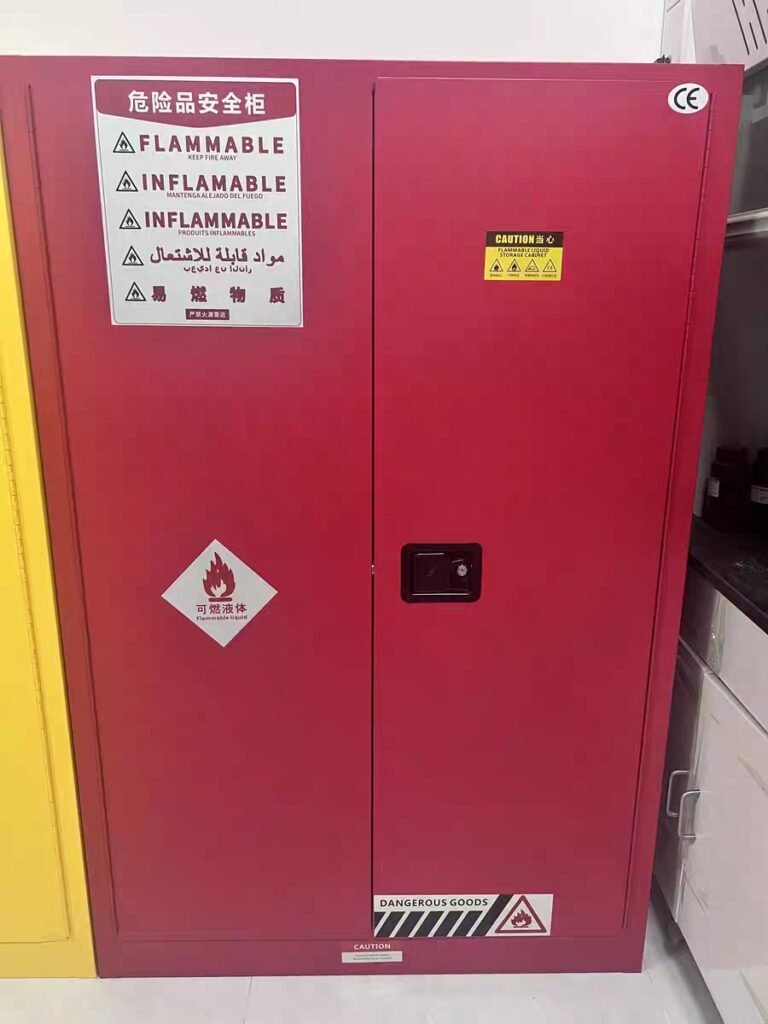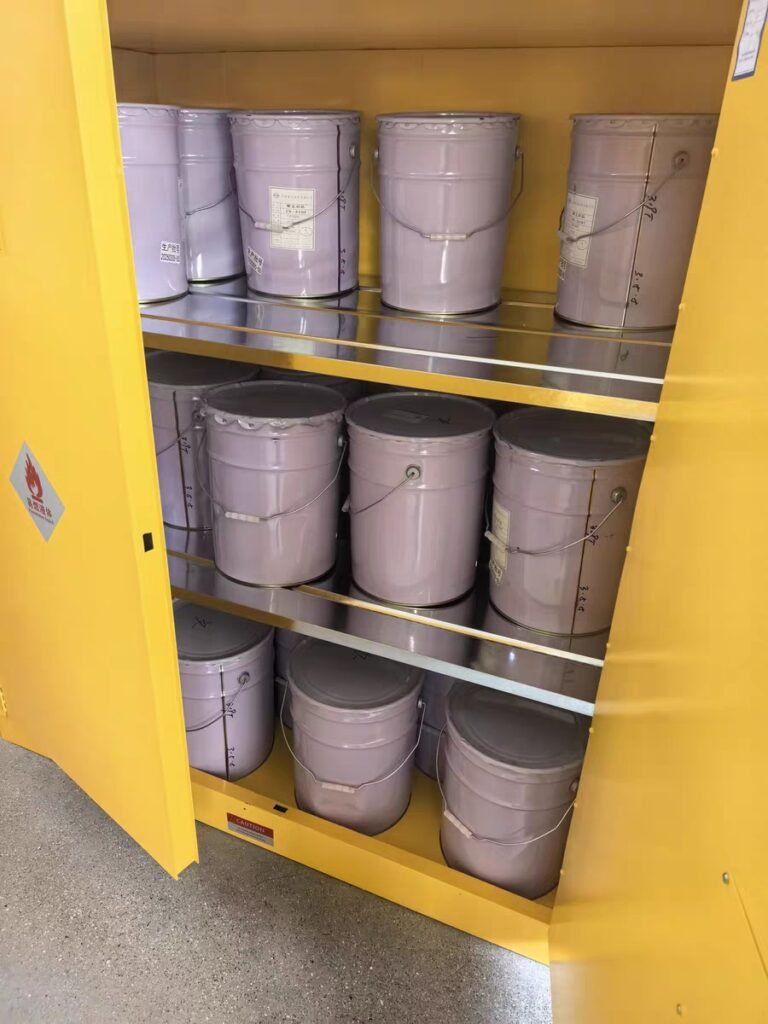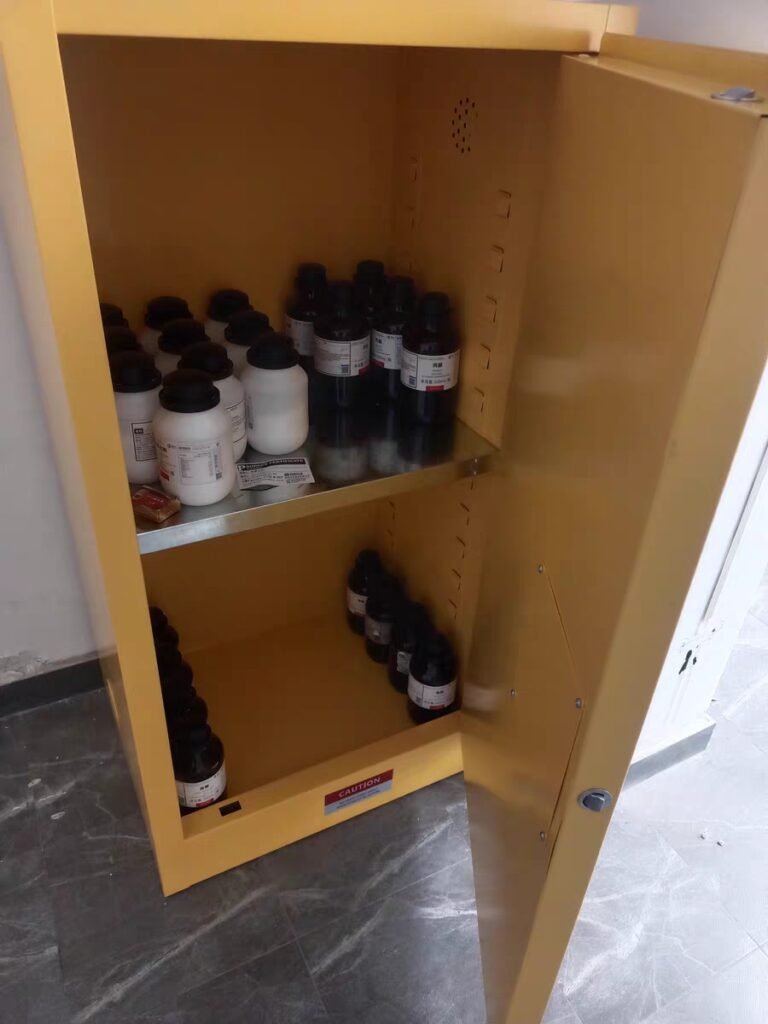How Chicago Industrial Enterprises and Laboratories Select Industry – Standard Chemical Steel Lockers, Lab Explosion – Proof Safety Cabinets, and More
I. Introduction
In the bustling industrial and scientific environment of Chicago, industrial enterprises and laboratories face the critical task of safely storing chemicals and hazardous materials. Selecting the right industry – standard chemical steel lockers, lab explosion – proof safety cabinets, metal medical hazardous cabinets, 60 – gallon yellow industrial explosion – proof and fire – proof safety cabinets, metal flammable storage cabinets, and chemical liquid storage cabinets is essential for ensuring compliance, protecting personnel, and safeguarding facilities. This article provides a comprehensive guide on the key considerations for making these choices.

II. Understanding the Regulatory Landscape in Chicago
- Local and Federal Regulations
- Chicago has strict local regulations governing the storage of chemicals, which are often in line with federal standards set by agencies like the Occupational Safety and Health Administration (OSHA). Industrial enterprises and laboratories must adhere to these regulations to avoid penalties and ensure a safe working environment. For example, OSHA has specific requirements regarding the storage of flammable liquids, including limitations on the quantity stored in a single cabinet and the need for proper ventilation.
- Local Chicago authorities may impose additional rules based on the city’s unique industrial and population characteristics. These can cover aspects such as the proper labeling of hazardous materials, the location of storage cabinets within a facility, and the frequency of safety inspections.
- Industry – Specific Requirements
- Different industries in Chicago have their own specific needs when it comes to chemical storage. In the pharmaceutical industry, for instance, there are strict regulations regarding the storage of pharmaceutical – grade hazardous chemicals. Metal medical hazardous cabinets need to meet these standards to ensure the safety and integrity of medications and research materials.
- The manufacturing industry in Chicago, especially sectors dealing with metals and chemicals, requires robust storage solutions. Chemical steel lockers and 60 – gallon industrial explosion – proof and fire – proof safety cabinets must be able to withstand harsh industrial conditions and protect flammable and corrosive substances used in production processes.

III. Key Considerations When Selecting Chemical Storage Cabinets
- Material and Construction
- Steel Quality: For chemical steel lockers and industrial – grade cabinets, the quality of the steel used is crucial. High – grade steel offers durability, resistance to corrosion, and strength to withstand potential impacts. In a Chicago industrial setting where chemicals may be accidentally spilled or where the cabinets are subject to rough handling, a well – constructed steel cabinet can ensure long – term functionality.
- Reinforcement and Sealing: Lab explosion – proof safety cabinets and 60 – gallon industrial explosion – proof and fire – proof safety cabinets should have reinforced walls, doors, and seams. These features help contain explosions and prevent the spread of fire. Tight seals around doors are also essential to prevent the leakage of hazardous vapors, protecting both the environment inside the lab or industrial facility and the surrounding area.

- Safety Features
- Locking Mechanisms: All types of chemical storage cabinets should have secure locking mechanisms. For metal medical hazardous cabinets in Chicago hospitals, where access to potentially dangerous medications and chemicals needs to be restricted, advanced locking systems such as key – coded locks, combination locks, or even biometric locks can be used. In industrial settings, locks on metal flammable storage cabinets prevent unauthorized access, reducing the risk of accidental ignition or theft.
- Ventilation Systems: Adequate ventilation is vital, especially for cabinets storing flammable or toxic chemicals. Lab explosion – proof safety cabinets and chemical liquid storage cabinets should have well – designed ventilation systems. These systems can help remove harmful vapors, prevent the build – up of explosive concentrations, and protect the health of laboratory technicians and industrial workers. Some cabinets may come with adjustable ventilation rates to suit different chemical storage needs.
- Fire and Explosion Resistance: 60 – gallon yellow industrial explosion – proof and fire – proof safety cabinets are designed to withstand high – intensity fires and contain explosions. They are typically made with fire – resistant materials and have features like self – closing doors that can automatically seal in case of a fire, preventing the spread of flames and heat.
- Capacity and Storage Configuration
- Determining Capacity: The capacity of the storage cabinet should be carefully evaluated based on the quantity of chemicals to be stored. In a large – scale industrial enterprise in Chicago, a 60 – gallon industrial explosion – proof and fire – proof safety cabinet may be necessary to store significant amounts of flammable solvents used in the manufacturing process. On the other hand, a small laboratory may only require a smaller – capacity chemical steel locker for storing research – related chemicals.
- Internal Configuration: Consider the internal layout of the cabinet. Some cabinets come with adjustable shelves, drawers, and compartments, allowing for flexible storage of different – sized chemical containers. In a Chicago laboratory dealing with a variety of chemicals, an adjustable – shelf chemical liquid storage cabinet can optimize space usage and make it easier to organize and access chemicals.
- Labeling and Identification

- Compliance with Labeling Standards: All chemical storage cabinets must be clearly labeled in accordance with Chicago’s regulations. Labels should indicate the type of chemicals stored, their hazards (such as flammability, toxicity, or corrosiveness), and any special handling instructions. For example, a metal flammable storage cabinet should have prominent “FLAMMABLE” labels, along with information about the maximum allowable storage quantity.
- Visibility and Durability of Labels: The labels should be highly visible and durable. In an industrial or laboratory environment, labels may be exposed to chemicals, temperature changes, and physical wear. Using high – quality, chemical – resistant labels ensures that the information remains clear and legible over time, helping workers quickly identify the contents and potential risks of each cabinet.
IV. Matching Cabinets to Specific Applications
- Industrial Enterprises
- Manufacturing Sectors: In metal – working and chemical – processing industries in Chicago, chemical steel lockers can be used to store small – scale chemicals, tools, and personal protective equipment. Larger 60 – gallon yellow industrial explosion – proof and fire – proof safety cabinets are suitable for storing bulk flammable chemicals, such as solvents used in painting processes or fuels used in machinery. Metal flammable storage cabinets can also be placed near workstations to provide quick access to frequently used flammable substances while ensuring safety.
- Logistics and Warehousing: Industrial warehouses in Chicago that handle a variety of chemicals need storage solutions that can accommodate different types of substances. Chemical liquid storage cabinets with proper ventilation and spill – containment features can store corrosive or volatile liquids. These cabinets should be placed in well – ventilated areas of the warehouse and labeled clearly to ensure easy identification and safe handling.

- Laboratories
- Research Laboratories: In Chicago’s research laboratories, lab explosion – proof safety cabinets are essential for storing volatile and potentially explosive chemicals used in experiments. Metal medical hazardous cabinets can be used in medical research labs to store biological hazards, radioactive materials, or pharmaceutical – grade chemicals. The cabinets should be placed in areas away from high – traffic zones to minimize the risk of accidental damage or exposure.
- Clinical Laboratories: In hospital – based clinical laboratories in Chicago, metal medical hazardous cabinets play a crucial role in storing medical – grade hazardous materials, including chemicals used in diagnostic tests, chemotherapy drugs, and infectious samples. These cabinets need to meet strict medical industry standards to ensure the safety of patients, laboratory staff, and the environment.
V. Supplier Selection and After – Sales Service
- Reputation and Compliance
- When choosing a supplier in Chicago, it’s important to select one with a good reputation for providing industry – standard chemical storage cabinets. Check if the supplier’s products meet all relevant local and federal regulations. Look for certifications such as UL (Underwriters Laboratories) listings, which indicate that the cabinets have been tested and meet specific safety standards.
- Reading customer reviews and testimonials can also give insights into the supplier’s reliability and the quality of their products. A supplier with a history of positive feedback is more likely to provide cabinets that perform well and meet the needs of industrial enterprises and laboratories in Chicago.
- After – Sales Support
- Consider the after – sales services offered by the supplier. This can include installation guidance, maintenance services, and the availability of replacement parts. In a busy Chicago industrial or laboratory setting, quick and efficient after – sales support is crucial. If a lock on a metal medical hazardous cabinet malfunctions or a ventilation system in a lab explosion – proof safety cabinet needs repair, the supplier should be able to respond promptly to minimize downtime and ensure continued safety.

VI. Conclusion
Selecting the right industry – standard chemical storage cabinets is a complex but essential task for Chicago’s industrial enterprises and laboratories. By understanding the regulatory landscape, considering key features such as material, safety, capacity, and labeling, matching cabinets to specific applications, and choosing a reliable supplier, businesses and research facilities can ensure the safe storage of chemicals. This not only protects the well – being of personnel and the integrity of facilities but also helps maintain compliance with Chicago’s strict safety regulations.
